STORY: Olin HEAL Lab Developing Less invasive Diagnostics for Endometriosis
Technology uses light and sound waves instead of more traditional, invasive tools
Endometriosis is a chronic inflammatory disease in women and other people with uteri aged around 20 to 40. Current diagnostic tools like laparoscopy and MRI present challenges because of individual variations in each patients’ condition and the invasive nature of the procedures.
From January 2023 through the summer, Chhavi Goenka, visiting assistant professor of engineering, and a team of students, including Zi Xiong ’24, Maya McKone Sweet ’26, Aaron Codrington ’25, Akshat Jain ’26, Ian Eykamp ’24, designed a system that more efficiently—and less intrusively—diagnoses the disease using photoacoustic spectroscopy, which is a combination of optical and ultrasound technologies.
“At the Health Equity and Access Lab (HEAL) at Olin, we think about diseases that haven’t been looked at or that we can look at in a different way,” says Goenka.
“Current diagnostics for endometriosis can be non-definitive and the methods, including transvaginal probes and surgery, are invasive (transvaginal methods are invasive if one asks someone with a uterus, even if the medical system does not technically consider it so). Our system instead uses light and soundwaves that safely penetrate the body through the abdominal wall and help us tell the difference between regular tissue and irregular tissues (in this case endometriomas, or cysts).”
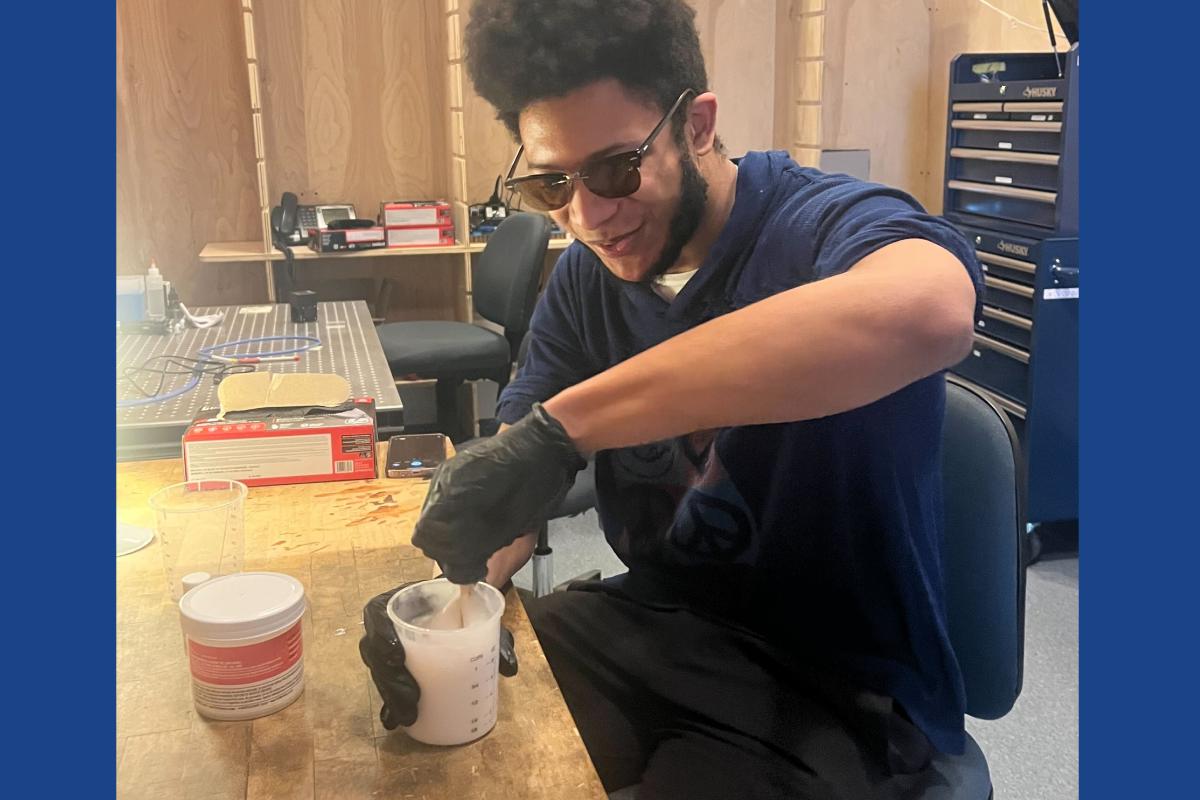
Student researcher at Health Equity and Access Lab (HEAL), Aaron Codrington ’25, working in the lab.
In their research, the team used optical phantoms to simulate optical properties of biological tissue. These materials—which can include anything from milk to wax to oil suspended in water—have similar optical properties to living tissue and are used to mimic the light distribution that would be seen in a real testing situation. To address inequities that often exist in healthcare, the team also created phantoms to simulate human differences, such as body types and skin colors.
“From what our literature review tells us, the last optical phantom for uterine tissue was made three decades ago, and if we didn’t pursue this work, we wouldn’t know that this area of research hasn’t progressed much,” says Goenka. “We can use this information to advocate for different kinds of people and bodies to be included in clinical trials, including people of color and trans people with uteruses.”
This project in the HEAL lab is part of the burgeoning field of biomedical optics, a highly interdisciplinary area of research that pulls expertise from biology, medicine, and electrical, computer, software, and mechanical engineering. It is one of many in a growing bioengineering focus at Olin; where students can choose a Bioengineering Concentration (E:Bio) that explores this inherently interdisciplinary area that is rooted in engineering problem-solving, a deep understanding of biology, and human-centered design.
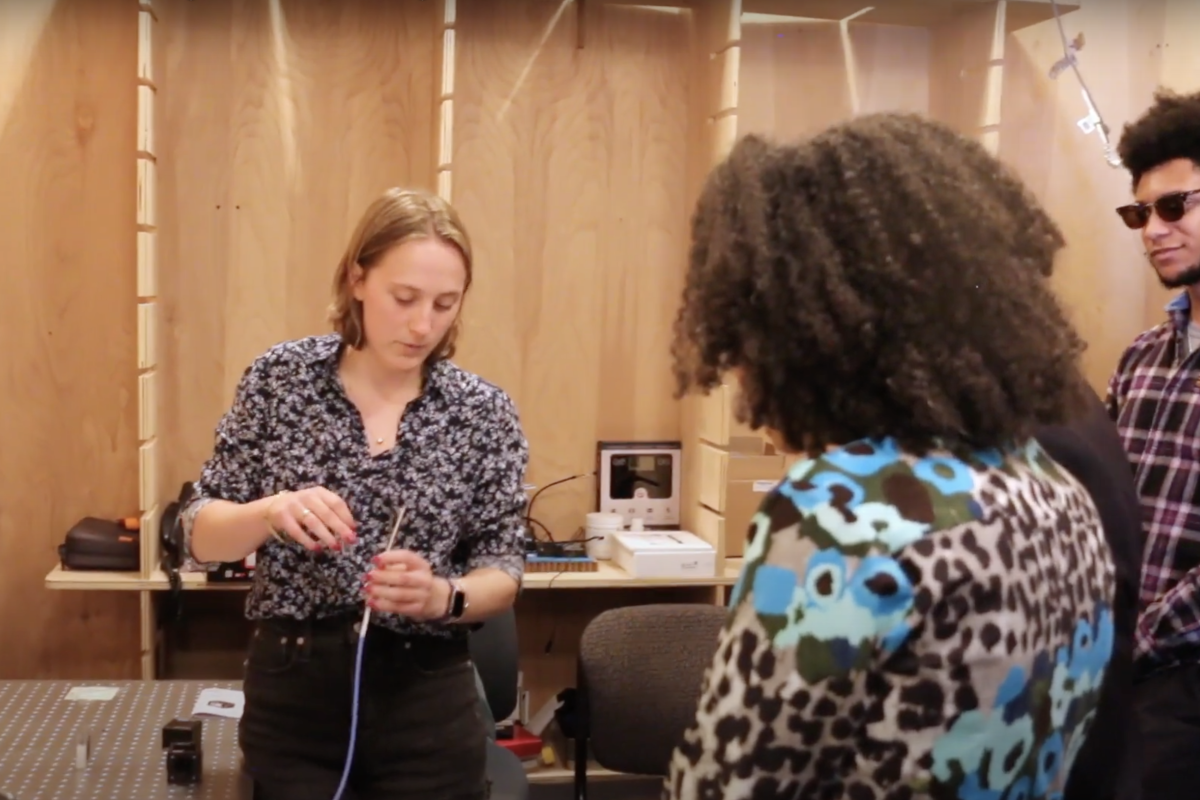
Watch as HEAL Lab member Maya McSweet '26 demos to President Barabino and Olin founder, Larry Milas, the team's research with optical phantoms, working to simulate optical properties of biological tissue.
“We want to make sure that young engineers are aware of inequities that can happen in design—for example, pulse oximeters can contribute to disparities in care because they work differently on people with non-white skin tones,” says Goenka.
“By including projects like this that encourage students to think about medical technology as they put their skills to work, we can impact the future of biomedical engineering.”
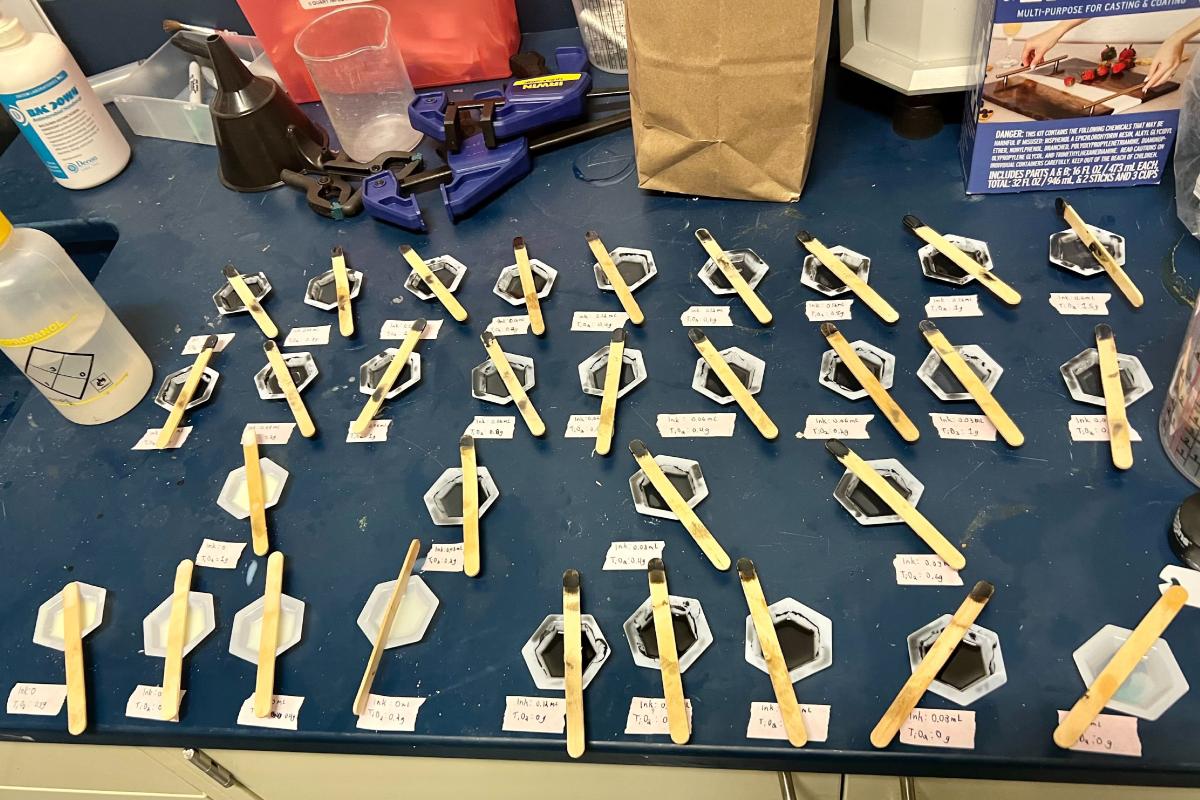
Testing different phantoms in the HEAL lab.
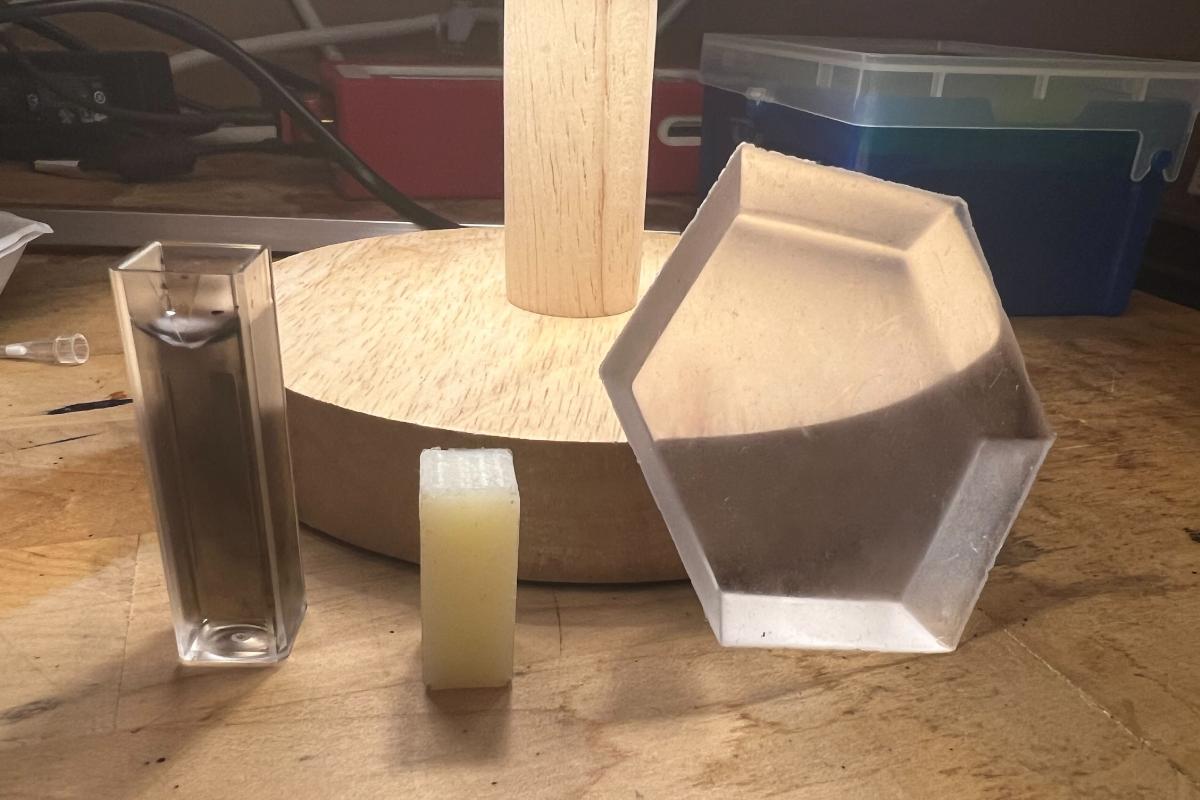
A selection of HEAL lab phantom tests.
Xiong ’24, an electrical and computer engineering major, has enjoyed delving in this project, which has given her extensive experience in a lab setting and in optical engineering. Over the summer, Xiong traveled to San Diego, CA, to present the team’s research at a conference hosted by SPIE, the international society for optics and photonics. Their paper is under review for publishing.
“When I first began working on this project, I was shocked at how common endometriosis is: It affects around 10 percent of women and people with uteri across the world,” says Xiong. “I was also surprised how little we know about the mechanisms of the disease itself, which I think needs more attention and research; I’m proud to be a part of that.”
“This is one example of the many healthcare issues that people may not know about because it may not have affected them or someone in their lives,” says Goenka. “It’s a great opportunity to show young engineers the ways in which you can use your skillset to make a difference in the real world.”
Now through next summer, students will continue work on this project, assembling the hardware for their system and working on trainings for other students in HEAL to test out the prototype.
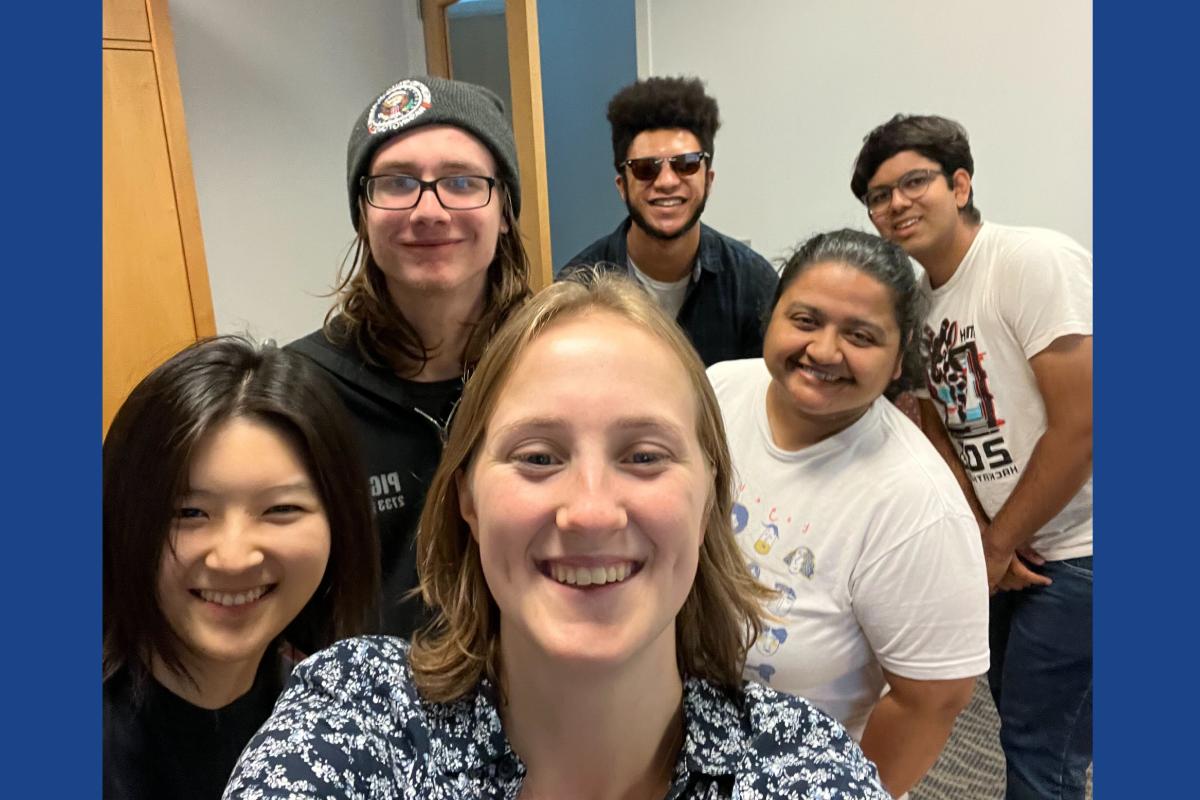
HEAL Lab team: Zi Xiong ’24, Maya McKone Sweet ’26, Chhavi Goenka, visiting assistant professor of engineering (left to right; bottom) Ian Eykamp ’24, Aaron Codrington ’25, and Akshat Jain ’26 (left to right; top)